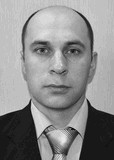DYNAMIC CONTROL OF INDICATORS OF FUNCTIONAL AND PHYSICAL STATE OF THE ORGANISM OF ATHLETES ENGAGED IN CYCLIC AND ACYCLIC SPORTS
Keywords:
functional, energy state of the body, adaptation, cyclic and acyclic sports, heart rate variability.Abstract
Objective of the study was a comparative analysis of the functional and energy state of athletes involved in cyclic and acyclic sports.
Methods and structure of the study. Dynamic control of indicators of the functional and energy state of athletes was carried out using the "Omega-C" software package. The express diagnostics subprogram made it possible to assess the level of adaptive and energy capabilities of athletes to physical loads, to determine the level of functional readiness of athletes in the form of a quantitative integral indicator of the state of "sports form", the state of current fitness, to assess the energy supply of physical loads and the psycho-emotional state of the athlete.
Results and conclusions. It was revealed that in athletes of the 1st group C (cyclic sports) the efficiency of the heart in terms of power, economy and reliability is significantly higher than in athletes of the 2nd group A (acyclic sports). The results obtained indicate that in athletes of cyclic sports, the reserves of energy supply are higher and more economically spent after performing a standard load than in athletes of the 2nd group A. When determining the level of adaptive, physical and integral readiness of athletes in cyclic and acyclic sports, we it was found that the performed load test is not specific for the athletes of the 2nd group. In addition, their body is not adapted to perform such work, so running turned out to be a strong stress factor for them, which led to an increase in the tension index.
References
Kochnev A.V., Belov V.K., Trapeznikov K.M. Vliyaniye standartnoy fizicheskoy nagruzki na osnovnyye parametry funktsionalnogo sostoyaniya organizma sportsmenov zanimayushchikhsya tsiklicheskimi i atsiklicheskimi vidami sporta [Influence of standard physical load on the main parameters of the functional state of the body of athletes involved in cyclic and acyclic sports]. Psikhologiya. Sport. Zdravookhraneniye [Psychology. Sport. Healthcare]. Proceedings International scientific conference. St. Petersburg, 2020. pp. 48-50.
Saryg S.K., Lopsan A.D., Buduk-ool L.K. Pokazateli variabelnosti ritma serdtsa u sportsmenov [Indicators of heart rate variability in athletes]. Vestnik Tuvinskogo gosudarstvennogo universiteta. Yestestvennyye i selskokhozyaystvennyye nauki. 2015. No. 2. pp. 48-51.
Shilovich L.L. Otsenka tekushchego sostoyaniya funktsionalnoy i fizicheskoy formy sportsmenov s primeneniyem programmno-apparatnogo kompleksa «Omega-C» [Assessment of the current state of the functional and physical form of athletes using the software and hardware complex "Omega-C"]. Problemy zdorovya i ekologii. 2010. pp. 78-82.
Goginava S.E., Kondakov V.L., Kopeikina E.N. et al. Combination of aerobic and anaerobic means in physical culture classes. 2020. Vol. 20. No. Suppl. 2. pp. 1235-1241.


